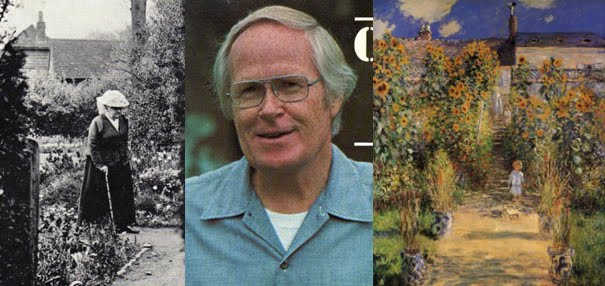Thursday, July 12, 2012
Transplanting Forever--
Another plant that can’t seem to find the right spot is a Mock Orange (Philadelphus“Snowbelle”). It is now in its second spot and still not growing strongly, although it was covered with flowers this spring. Since it is not doing that well and is taking up valuable real estate in the Cottage Garden, it will be moved in the fall to, I hope a better spot. I love Mock Orange, but I can’t get them to grow on this property!
A Riot of Color—
I have planned my Cottage Garden following all sorts of rules and advice as to color and texture combinations. I have now decided to throw that out. I will put a plant where I decide I want it at that moment. If it survives there, it stays there. If it doesn’t thrive, I will move it to another, pretty much pulled out of a hat, location. The same goes with buying a plant—if it catches my eye, I will try to find a spot for it. My main “design” principle is to have a riot of color. I love color—mostly strong and vivid colors. My garden will mirror that. Also, I will give up planting only “edging” plants as edging at the front of the garden. I will use plants up to 2 foot tall. I think that will be more interesting and easier to maintain if a plant dies.
I will be adding some common orange day lilies in pockets here and there.
Deer Deterrents—
Deer No-No may work, at least sometimes. It is very hard to know when a shrub is doing well simply because the deer hasn’t come, as opposed to being turned off by Deer No-No. A neighbor says he never has a deer problem because he uses “Irish Spring” soap on stakes within his garden. I am trying that also, but so far, I have discovered that some critter(s) take the soap and eat it, thus leaving the plants to be eaten! I am still working on how to protect the soap! I think that I have thus taken a step backward!
I put some Deer Scram in one of my gardens today but I can’t put it down as the instructions state because of the way my garden is set up. So I put it on soil around the plants—we shall see.
So far, the best deer and other critter deterrent has been the 4 foot tall welded wire fence around the cottage garden!
Other—
Since the tomato plant has grown taller than the cage, I will have to add some wire fencing to the top, somehow.
~~~~~~~~~~~~~~~~~~~~~~~~~~~~~~~~~~~~~



